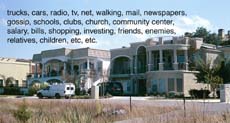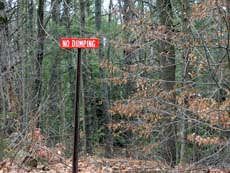index
Links versus physical nearness
click on images for full-size:




Surburban connections across distances

Physical proximity ready to receive separate actions and narratives

Trying to avoid some effects of physical proximity
Grammatical connections create an action-space of linked areas that are "next to" one another in the sense that trajectories of action include one phase here and another phase there. For instance in an auditorium the stage and the audience area are "next to" one another in terms of action definitions even though they may be physically separated by the orchestra pit, or, in a large office building two offices on different floors may be "next to" one another for a sequence of actions that are done first here then there. But in addition to grammatical next-to-ness, there is normal physical proximity. This may or may not be grammatically important, but it will have meaning effects. The office just next door to mine may be "miles away" in terms of its function, so that trajectories of action that pass through my office never go through the one next door, but because the two offices are physically adjacent, other kinds of interaction will develop. Even if the employees never eat lunch together, or never speak to one another, the contrast between the two offices will still function as an overtone of meaning on their official grammatical places. Physical connection also allows the exploration of new kinds of relations that begin outside of grammatical links. In a hypertext the difference between these two kinds of connection collapses because the only connections are the links. In that sense, while the hypertext can be a useful analogue for pointing out the presence of the distant in the near, and the ways in which suburbs violate the expectations of visible architectural unity, suburbs are the more complex objects because their physicality provides another mode of access and another kind of connection/unity.